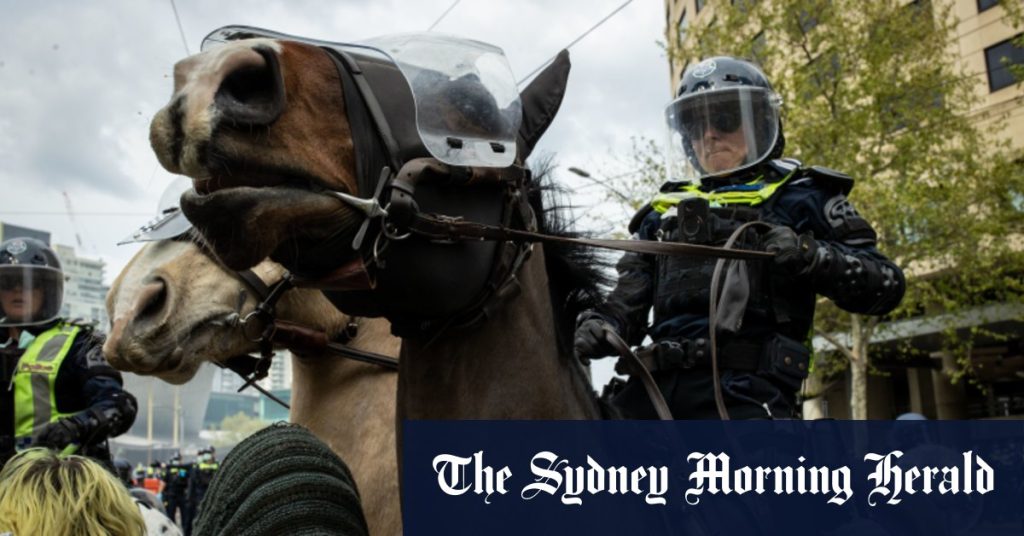Violent protests erupted outside the Melbourne Convention and Exhibition Centre, with protesters hurling a variety of projectiles at police officers, horses, and expo attendees. Some of the objects thrown included rocks, eggs, liquid irritants, and horse manure. The police responded with foam bullets, stun grenades, tear gas, and pepper spray to control the unruly crowd. The protesters, led by conglomerate protest group Disrupt Land Forces, claimed to have deployed butyric acid, a food additive made from dairy products, during the protest.
Victoria Police defended their use of force during the protest, citing the need to control the crowd and ensure the safety of officers and attendees. They are seeking to identify and speak with individuals involved in various offenses, including assault police, animal cruelty, affray, discharging a missile, and obstructing police. The police union described the protests as some of the most violent they had seen in decades, with some protesters resorting to extreme measures to disrupt the event. Detectives are still looking to speak with individuals who were present at the protest.
Disrupt Land Forces, the protest group leading the action, is calling for an end to weapons sales to Israel and an arms embargo. They accused police of using excessive force during the protest, claiming that officers attacked protesters with blows, kicks, tear gas, pepper spray, and rubber bullets. The group has urged anyone with information about the protest to come forward and contact Crime Stoppers at 1800 333 000. Despite the confrontational nature of the demonstration, the group remains committed to their cause and continues to advocate for an end to weapons sales.
The protest outside the Melbourne Convention and Exhibition Centre highlighted the tensions surrounding issues related to defense and arms sales. The confrontations between protesters and police underscore the challenges of balancing freedom of expression and public safety during large-scale demonstrations. The use of projectiles, including horse faeces and butyric acid, raises concerns about the escalation of violence during protests and the impact it can have on law enforcement officers and innocent bystanders. Both sides have defended their actions and sought to hold individuals accountable for their roles in the protest.
The aftermath of the protest has sparked controversy and debate over the appropriate use of force by police in response to violent demonstrations. Some have questioned the necessity of deploying foam bullets, stun grenades, tear gas, and pepper spray, while others argue that these measures are essential to maintaining order and protecting public safety. The ongoing investigation into the protest aims to identify those responsible for criminal behavior and ensure that appropriate consequences are imposed. The call for an arms embargo and an end to weapons sales to certain countries continues to be a focal point for protesters and activists advocating for peace and disarmament.
In the midst of a global arms trade and ongoing conflicts, the protest in Melbourne reflects broader concerns about the impact of weapons sales and militarization on international relations and human rights. The clash between protesters and police highlights the complex dynamics of protests and law enforcement responses, as well as the challenges of managing public demonstrations in a democratic society. The need for dialogue, transparency, and accountability in addressing issues related to defense spending and arms sales remains a crucial aspect of promoting peace and security at both the local and global levels. As the investigation into the protest continues, it remains to be seen what actions will be taken to address the underlying grievances and tensions that fueled the demonstrations.













